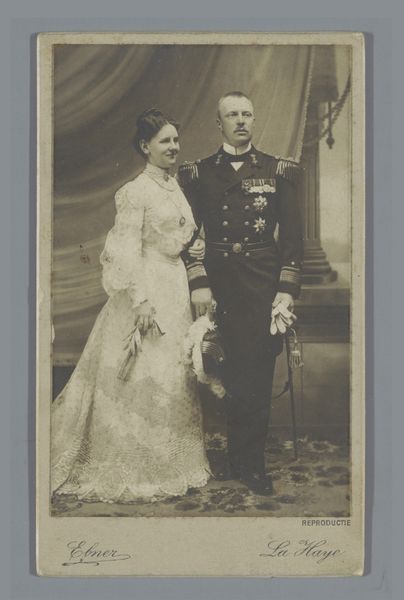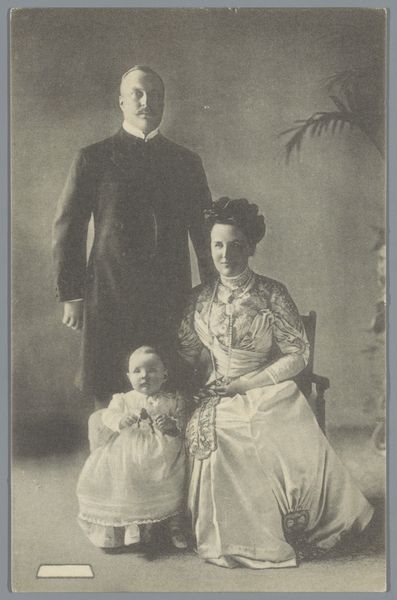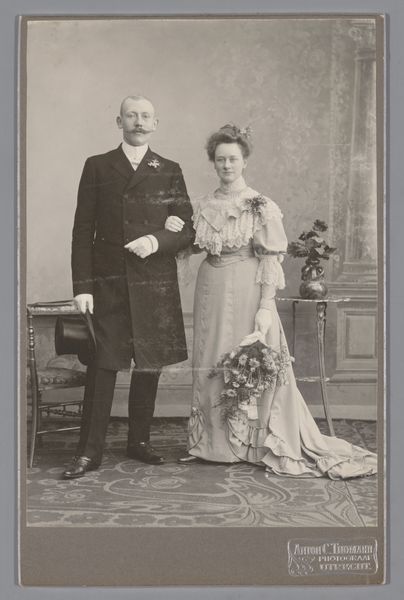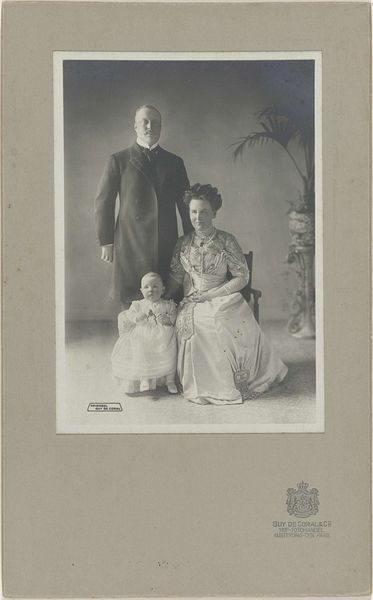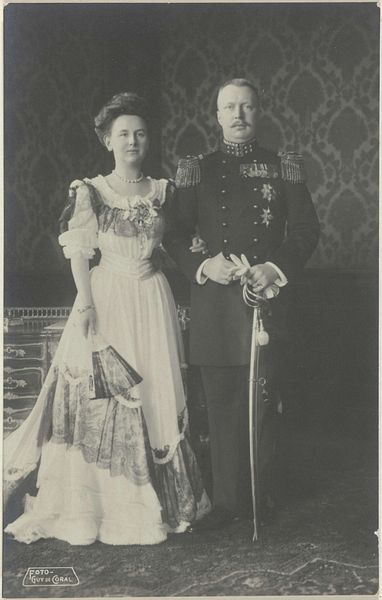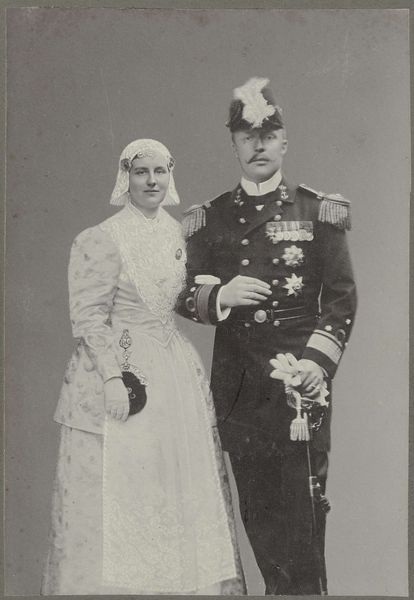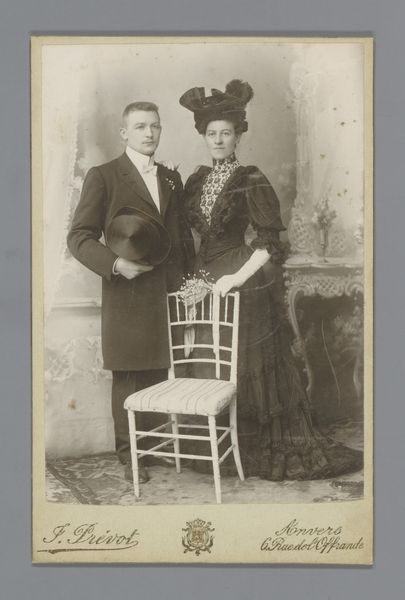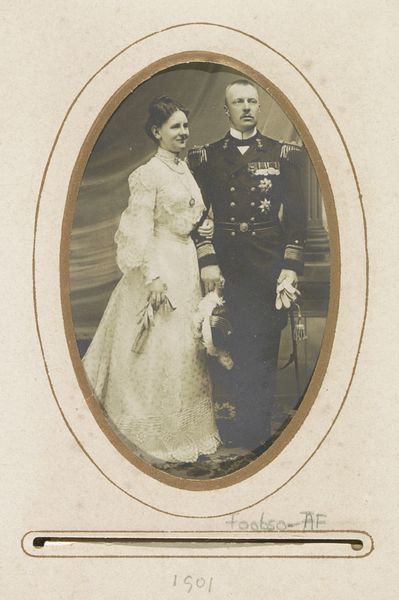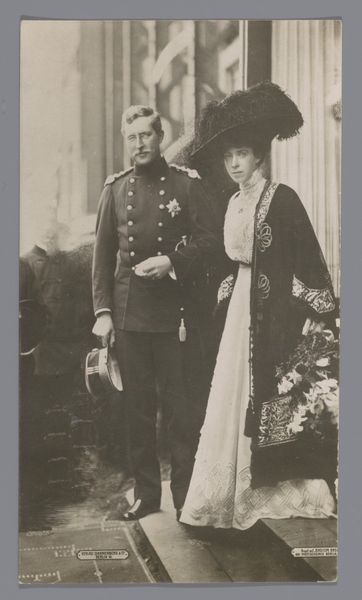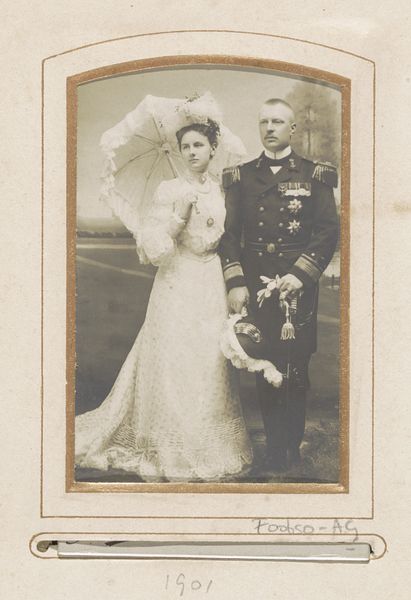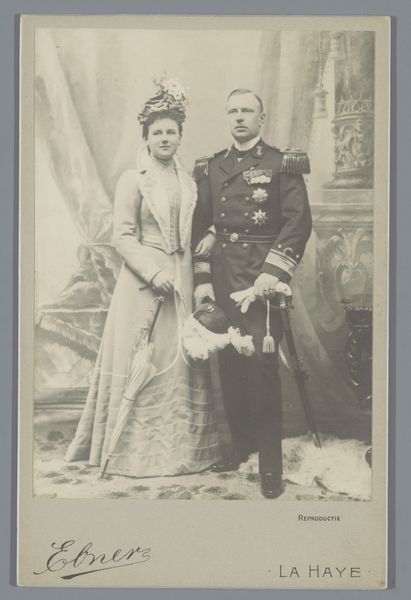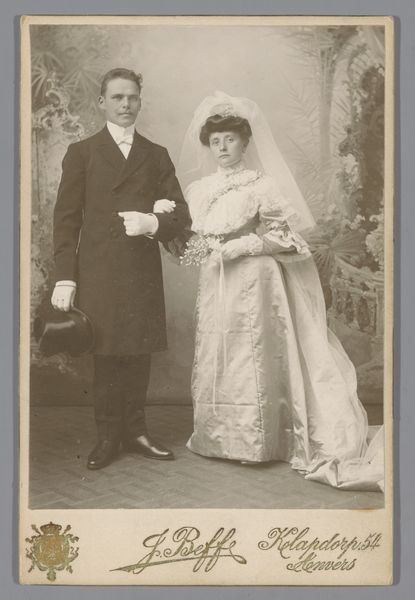
print, photography
#
portrait
# print
#
photography
#
modernism
#
realism
Dimensions: height 150 mm, width 117 mm
Copyright: Rijks Museum: Open Domain
Curator: Allow me to introduce "Heer en mevrouw Beringer, 1933," a photographic print potentially dating between 1933 and 1939. The artist remains anonymous. Editor: It's striking how the subdued tonality impacts my reading; it renders a mood of quiet solemnity, almost a study in formality and posing. What stands out for you compositionally? Curator: Indeed. The composition achieves balance through symmetry, subtly disrupted. Observe the contrast of textures: the wife's lace collar and soft dress juxtaposed with the sharp angles of the husband's military garb. It invites the viewer to visually map power relations inherent to this period. Editor: From a cultural standpoint, photographs like this offered emerging middle-class families a vital method of self-representation and public identity construction. Given the date, and the man’s military attire, how does it intersect with social movements, institutional power, and political history during that era? Curator: Fascinating considerations. There's a clear intent to align with Modernism in its stark representation but simultaneously anchor itself in Realism through meticulous attention to details and accurate capturing of subjects—producing aesthetic and ideological tensions. The backdrop serves as an interesting theatrical staging, juxtaposing the mundane with staged aspiration. Editor: The image clearly underscores the aspirations and values of the Dutch middle class during a period of considerable social transformation and impending global conflict. It presents us not only an image, but a window into a society striving to establish identity and posterity against prevailing winds. Curator: Absolutely, its strength lies within this intricate negotiation. These contrasting qualities—of historical contextualization, social status markers, and the underlying human element—form its compelling semiotic tableau. Editor: Studying this photographic print opens several lines of historical, aesthetic, and socially responsible dialogues for interpreting images of that period. Curator: It compels one to see photography less as neutral recordings and more as intentional acts brimming cultural statements; indeed.
Comments
No comments
Be the first to comment and join the conversation on the ultimate creative platform.
